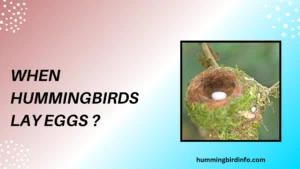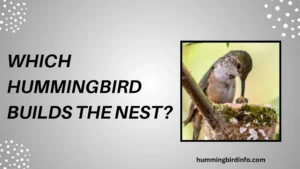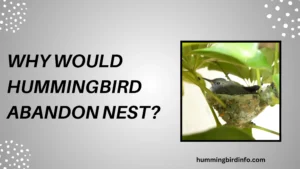The moment a hummingbird egg hatches marks a remarkable turning point in nature’s delicate cycle. Inside those tiny, fragile eggs lies new life ready to break free, signaling hope and continuation for one of the world’s most captivating birds.
This event is more than just a simple hatch — it represents the culmination of weeks of precise care, environmental balance, and evolutionary timing.
Understanding when hummingbird eggs hatch is crucial for bird lovers, conservationists, and anyone curious about these dazzling creatures. The timing of hatching affects the survival of chicks and the future of hummingbird populations.
Each species has its own schedule shaped by environmental factors and the mother’s careful incubation, revealing a finely tuned biological rhythm few fully appreciate.
This article will explore the typical incubation periods for different North American hummingbird species, the factors influencing these timelines, the intricate hatching process, and the vulnerable life stage that follows.
By grasping this process, readers can better appreciate the hummingbird’s incredible journey from egg to winged marvel.
Contents
- 1 The Incubation Clock: Species-Specific Timelines
- 1.1 1. Ruby-throated Hummingbird (Archilochus colubris): The Eastern Emergence
- 1.2 2. Rufous Hummingbird (Selasphorus rufus): The Western Awakening
- 1.3 3. Allen’s Hummingbird (Selasphorus sasin): The Coastal Hatching
- 1.4 4. Calliope Hummingbird (Selasphorus calliope): The High-Altitude Debut
- 1.5 5. Black-chinned Hummingbird (Archilochus alexandri): The Adaptable Unveiling
- 1.6 6. Costa’s Hummingbird (Calypte costae): The Desert Emergence
- 1.7 7. Other North American Species
- 2 Conclusion
- 3 FAQs
- 4 1. How long does it take for hummingbird eggs to hatch?
- 5 2. Does the mother hummingbird stay on the eggs the entire time?
- 6 3. What is “pipping” in hummingbird eggs?
- 7 4. Are all hummingbird species’ incubation periods the same?
- 8 5. What happens immediately after the chick hatches?
- 9 6. Can environmental temperature affect hatching time?
The Incubation Clock: Species-Specific Timelines
1. Ruby-throated Hummingbird (Archilochus colubris): The Eastern Emergence
The Ruby-throated hummingbird begins incubation only after the last egg is laid, with an average period of 12 to 14 days. During this time, the female maintains near-constant warmth, critical for embryonic development.
Ambient temperature and humidity levels subtly influence the incubation speed. When ready, the chick initiates pipping by making a tiny hole, signaling its imminent arrival. The hatchlings emerge featherless, blind, and fully reliant on their mother’s care for survival.
2. Rufous Hummingbird (Selasphorus rufus): The Western Awakening
In the West, the Rufous hummingbird incubates its eggs for approximately 14 to 16 days. Consistency in incubation and local weather conditions play essential roles. The hatching follows a similar pattern with pipping and emergence.
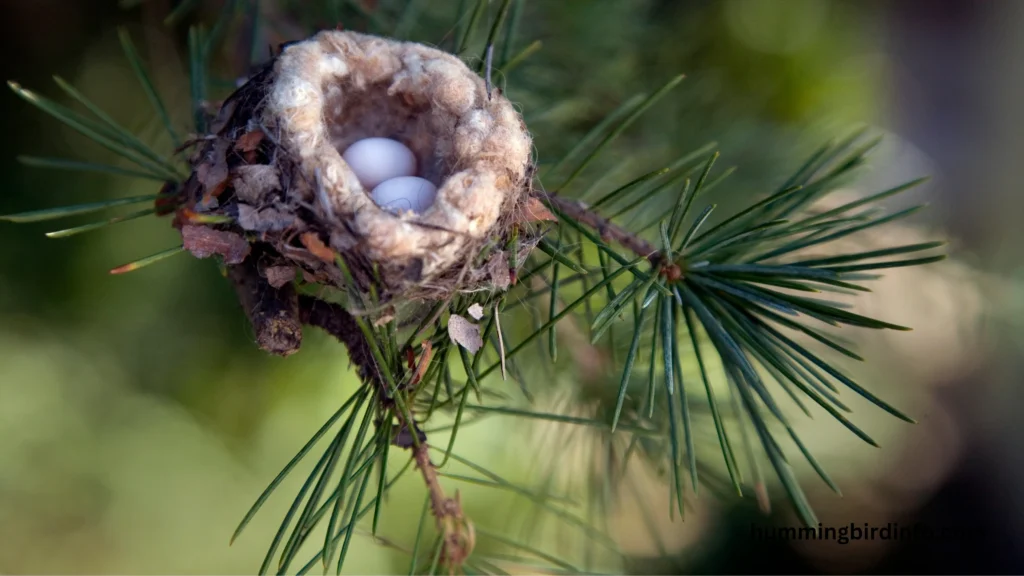
These chicks are equally delicate, requiring warmth and feeding from the mother for days after hatching to thrive in their rapidly changing environment.
3. Allen’s Hummingbird (Selasphorus sasin): The Coastal Hatching
Along the Pacific coast, Allen’s hummingbird experiences slightly longer incubation, typically 15 to 17 days, influenced by the cooler coastal climate. The mother must work harder to maintain optimal warmth, ensuring embryos develop properly.
Hatchlings appear similarly tiny and defenseless, marking the start of a crucial care phase that determines their survival.
4. Calliope Hummingbird (Selasphorus calliope): The High-Altitude Debut
At higher elevations, the Calliope hummingbird faces cooler temperatures, extending incubation to about 16 to 18 days or more. The mother’s dedication to constant incubation is vital here, counteracting the chill to keep embryos alive.
The chicks emerge just as fragile as other species, but often in environments that demand rapid adaptation.
5. Black-chinned Hummingbird (Archilochus alexandri): The Adaptable Unveiling
The Black-chinned hummingbird, widespread across diverse habitats, typically incubates eggs for 12 to 14 days. Variations occur depending on local conditions but generally fall within this range.
The hatching process mirrors that of other species, with tiny chicks that depend completely on the mother’s warmth and feeding.
6. Costa’s Hummingbird (Calypte costae): The Desert Emergence
In desert climates, Costa’s hummingbird experiences an incubation period of about 16 to 18 days, sometimes longer due to cold desert nights. Maintaining consistent nest temperature amid drastic daily fluctuations is challenging. Hatchlings here face a harsh environment, making the mother’s nurturing role even more critical to their survival.
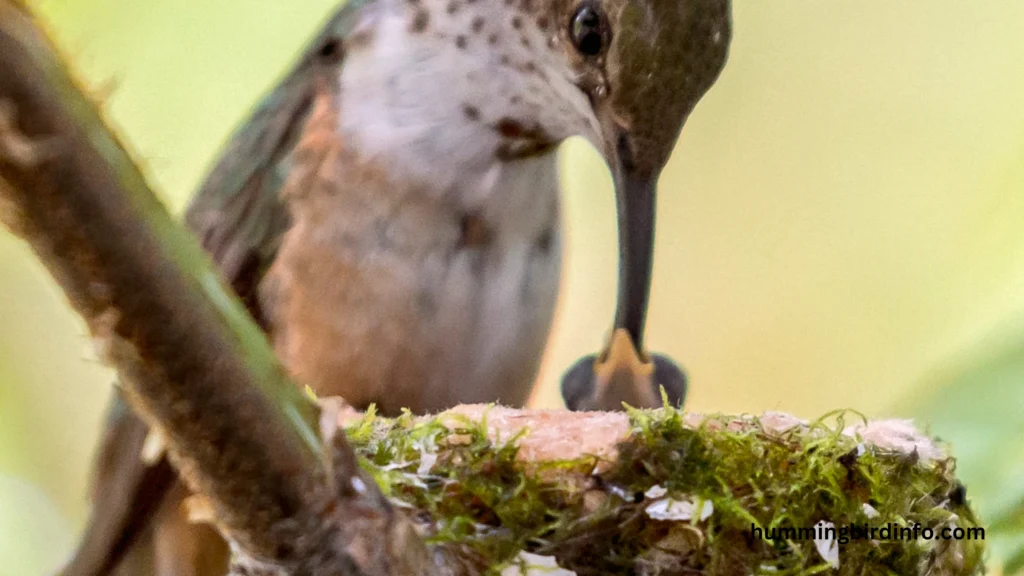
7. Other North American Species
Many other species fall within similar incubation timelines, generally ranging from 12 to 18 days, shaped by their unique environments. Across all, the female’s steady incubation is the most crucial factor ensuring healthy hatching and strong beginnings for the next generation.
Conclusion
The timing of hummingbird egg hatching is a remarkably precise event, finely tuned by species traits and environmental conditions.
From the swift 12-day incubation of the Ruby-throated to the extended 18-day wait of desert species, each timeline reflects an evolutionary adaptation to ensure survival.
At the heart of this process is the female hummingbird’s dedication—maintaining warmth and humidity that allows fragile embryos to grow and hatch successfully. Her near-constant care creates the perfect conditions for life to begin.
Newly hatched hummingbirds emerge vulnerable and dependent, embarking on a rapid growth journey with countless challenges. Understanding this process encourages us to protect their habitats and appreciate the intricate biological dance behind every tiny beating wing.
FAQs
1. How long does it take for hummingbird eggs to hatch?
Hummingbird eggs generally hatch within 12 to 18 days, depending on the species and environmental conditions.
2. Does the mother hummingbird stay on the eggs the entire time?
Yes, the female incubates nearly continuously, rarely leaving the nest during this period to maintain warmth.
3. What is “pipping” in hummingbird eggs?
Pipping is when the chick uses a small “egg tooth” to break the shell, starting with a tiny hole before fully hatching.
4. Are all hummingbird species’ incubation periods the same?
No, incubation periods vary by species and habitat, with some lasting as little as 12 days and others up to 18 days.
5. What happens immediately after the chick hatches?
Newborns are featherless and blind, relying completely on the mother for warmth and feeding through regurgitated nectar and insects.
6. Can environmental temperature affect hatching time?
Yes, cooler temperatures may lengthen incubation, while warmer conditions can slightly shorten it, though changes are minor.


